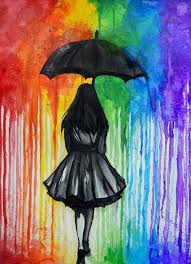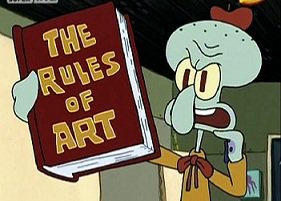Formal Analysis is when you describe a piece of art using features such as color, line, scale, contrast, position, material, illusion, space and mass. Formal Analysis is also trying to understand what the artist is trying to convey in his creation. Color is used in formal analysis to describe or portray a certain type of mood in art. Artist use warm colors, such as red and orange, to portray a positive/happy mood and cold colors, such as blue and grey, to portray a negative/sad mood. Other components such as position, scale, space and mass are used to portray an illusion of depth in a work of art and are also used to make artworks look naturalistic and mimesis. These components of an artwork can also create a form of texture such as using lines to portray that something is rigid or smooth.
Another type of analysis that intertwines with Formal Analysis is Contextual Analysis. Contextual Analysis is when you use external resources to try and understand what a certain piece of art is about. Resources such as articles, other works of art, journals, artist writings can be used to gain information as to when an artwork was made and what the artist wanted to portray to the viewer based on the era they lived in. A component of Formal Analysis that may be helpful in Contextual Analysis is the material used for the artwork. By paying attention to the material of a piece of art the viewer can find out the time period in which that material/ type of art was the most popular and if the artwork was made within that era.






:max_bytes(150000):strip_icc()/elements-of-composition-in-art-2577514-v3-5b5b6c73c9e77c002c93c6de.png)
 Formal analysis is one of the main ways of discussing and critiquing a piece of art. Formal analysis consists of examining how the artists uses color, patterns, shape, tone, and the lines in their artwork. In addition, subsections of these main concepts such as contrast, size, scale, primary/ secondary colors, position, composition, material and depth are also used in analyzing artwork. Using these components to compose a formal analysis answers many questions such as why the artist positioned his model a certain way It is the first step into really understanding why the artist decided to create this piece, who was the intended audience, etc. with formal analysis we also take into account the era that the artwork was created as well as the origin and what influences might be included in the piece.
Formal analysis is one of the main ways of discussing and critiquing a piece of art. Formal analysis consists of examining how the artists uses color, patterns, shape, tone, and the lines in their artwork. In addition, subsections of these main concepts such as contrast, size, scale, primary/ secondary colors, position, composition, material and depth are also used in analyzing artwork. Using these components to compose a formal analysis answers many questions such as why the artist positioned his model a certain way It is the first step into really understanding why the artist decided to create this piece, who was the intended audience, etc. with formal analysis we also take into account the era that the artwork was created as well as the origin and what influences might be included in the piece.



